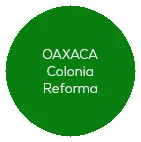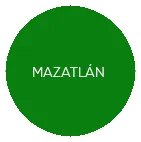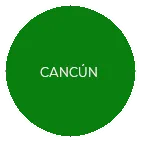
Friday, August 25, 2023, By Jessica Hernández, Real Estate Advisor and & Marketing Analyst
Throughout the Mexican territory to this day, a significant number of mother tongues are still spoken, It is considered a multilingual nation, and it is among the 10 countries with the largest remarkable linguistic diversity. Among the most widely spoken languages in the national territory are náhuatl, chol, totonaca, mazateco, mixteco, zapoteco, otomí, tzotzil, tzeltal and maya
Oaxaca is recognized as the entity with the greatest linguistic diversity at the national level. Throughout its 8 regions, 16 ethnic groups coexist. At the national level, Oaxaca concentrates 16.6% of the population that speaks an indigenous language, of which 10.6% do not speak Spanish.
Of the total Oaxacan population (4,132,148 inhabitants), 31.1% aged 3 and over speak an indigenous language, of said total 52% is female and the remaining 48% is male
The indigenous languages spoken in the state are Zapoteco, Mixteco, Mazateco, Mixe, Chinanteco, Chatino, Triqui, Huave, Cuicateco, and Náhuatl. These data are reliable proof of the great diversity of cultures that exist in Oaxaca since each one of them derives from the different indigenous peoples such as Amuzgo, Chatino, Chinanteco, Chocholteco, Chontal, Cuicateco, Huave, Ixcateco, Mazateco, Mixe, Mixtec, Nahua, Tacuate, Triqui, Zapotec and Zoque. Precisely due to these peoples, it is that in addition to the original indigenous languages, their variants emerge from them. In our state, 54 variants of the mother tongues are recognized, among which the most prevalent are Zapotec and Mixtec, and within the municipalities with the largest indigenous population until the year 2020 are Juchitán de Zaragoza, Huautla de Jiménez, San Felipe Jalapa de Díaz, San Miguel Soyaltepec, San Juan Bautista Tuxtepec, Oaxaca de Juárez, San Agustín Loxicha, Santiago Juxtlahuaca, San Juan Guichicovi, and Santa María Chilchotla.

It is essential to recognize the importance of preserving the indigenous languages of the peoples of Oaxaca, since they are intangible cultural legacies that provide originality and wealth to the State.
In favor of the conservation and diffusion of the mother tongue, in 1999 UNESCO approved the initiative of the International Day of the Mother Language which is celebrated on February 21 of each year, with the purpose of recognizing the linguistic diversity in the world as a tool to promote tolerance and respect for others.
The fact that a considerable percentage of the Oaxacan population continues to speak them shows us the effort of past generations to continue instilling their linguistic legacy in the new generations. Some of these languages are in danger of extinction since they are spoken by very few people, the majority of whom are elderly, therefore the importance of both the state and national governments continue to carry out programs and actions to promote the care and use of mother tongues, which are a source of pride and identity in the state and in the country.
Indigenous languages are more than a language, they represent the entire ideology of a people, and their way of seeing life, nature, and the universe. It is the duty of society in general to preserve them and include them in the educational field, which will result in an increase in the number of their speakers, the recognition of the peoples, as well as the reduction of discrimination.







